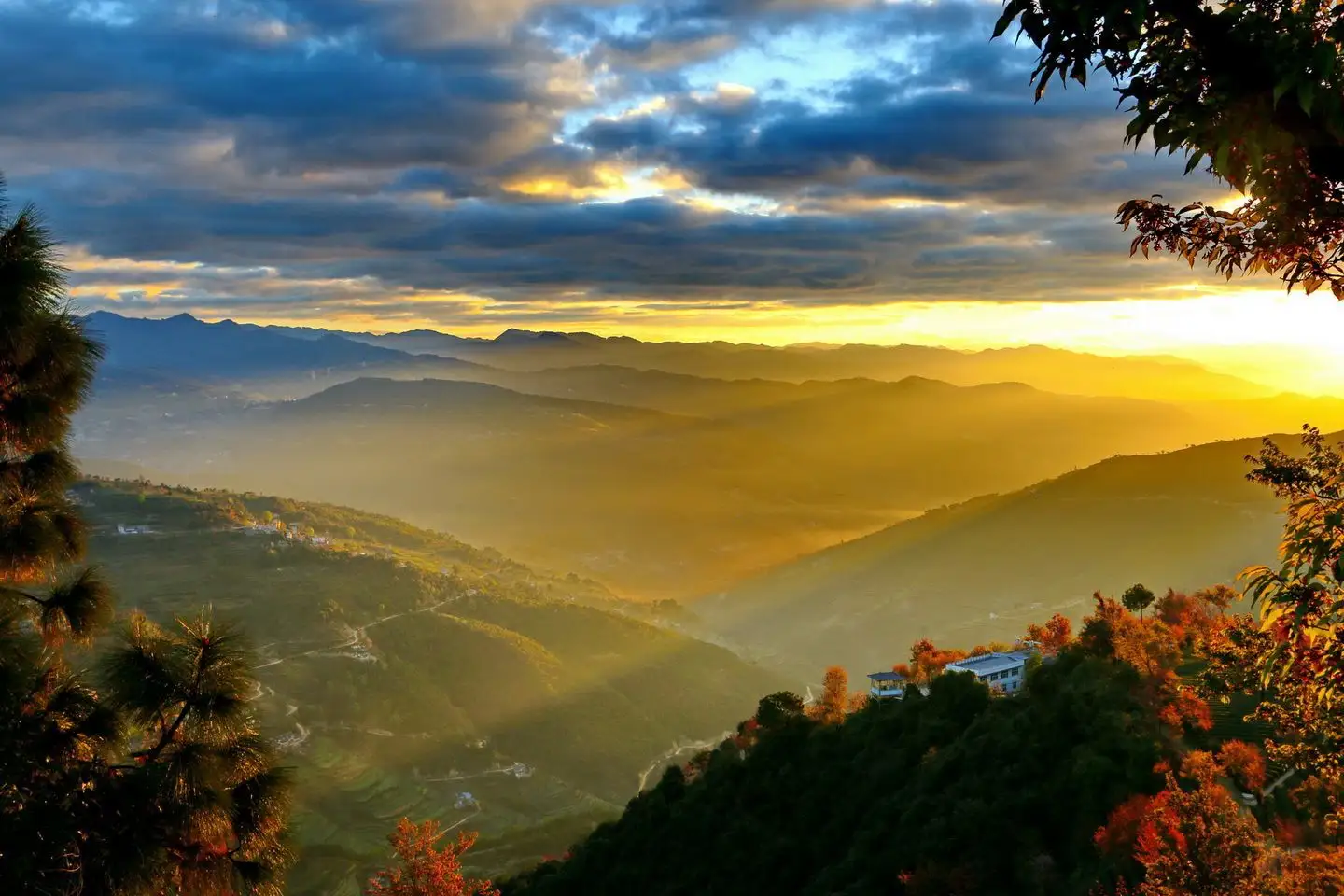Jiangnan (South of Yangtze River) Tea Gardens
1. Dongting Mountain Biluochun Tea Garden, Suzhou
The Dongting Mountain Biluochun Tea Garden is located on the shores of Taihu Lake (太湖) in Wuzhong District (吴中区), Suzhou City (苏州市), Jiangsu Province (江苏省). The garden includes two main Dongting Mountains: Dongshan (东山) and Xishan (西山), both surrounded by the scenic beauty of Taihu Lake. The region’s mild, humid climate, abundant rainfall, loose and fertile soil, and misty weather create an ideal environment for tea cultivation.
The garden mainly grows the “Dongting Mountain Group Small Leaf Tea Tree” (洞庭山群体小叶种茶树), a specific variety of Biluochun tea (碧螺春). The spring tea from Dongting Mountain, especially the pre-Qingming (清明节前采摘) and pre-Guyu (谷雨前采摘) teas, is considered a top-tier product. Biluochun spring tea is known for its delicate buds, covered in fine hairs, and its spiraled shape resembling a snail. The tea has a vibrant green color, a clear and bright brew, a lingering fragrance, and a refreshing, sweet, and mellow taste, with a unique quality known as “one tenderness (嫩) and three freshnesses (鲜): fresh color, fresh aroma, fresh taste.”
2. Longwu Tea Garden, Hangzhou
The Longwu Tea Garden is located in Longwu Tea Town (龙坞茶镇), in the western part of West Lake District (西湖区), Hangzhou City (杭州市), Zhejiang Province (浙江省). It lies near the West Lake National Forest Park (西湖国家森林公园), one of the core production areas for West Lake Longjing tea (西湖龙井茶). The garden is surrounded by picturesque geography, with Qiantang River (钱塘江) to the east, Wuchao Mountain National Forest Park (午潮山国家森林公园) to the west, Ling Mountain Scenic Area (灵山风景区) to the south, and Xixi Wetland (西溪湿地) to the north, creating an ideal environment for tea cultivation.
The Longwu Tea Garden mainly grows West Lake Longjing tea trees (西湖龙井茶树), including Longjing No. 43 (龙井43号) and the traditional wild species (老茶蓬). Longjing No. 43 is a cultivated, superior variety, while the wild species is the traditional native strain. The tea garden is one of the largest producers of Longjing tea, not only in Hangzhou but also in China. The spring Longjing tea, especially the pre-Qingming (清明节前采摘) and pre-Guyu (谷雨前采摘) teas, is considered a rare delicacy. West Lake Longjing tea is known worldwide for its “green color, strong fragrance, mellow taste, and beautiful shape,” with delicate green leaves, a lasting orchid-like fragrance, and a bright, apricot-colored tea liquor.
3. Fuxi Tea Garden, Huangshan
The Fuxi Tea Garden is located in Fuxi Township (富溪乡), Huizhou District (徽州区), Huangshan City (黄山市), Anhui Province (安徽省), in the southwestern part of the Huangshan Mountain (黄山) Scenic Area. The garden is situated at an altitude of 300-800 meters, in a climate that is mild, humid, with fertile soil and abundant sunlight, creating ideal conditions for tea cultivation.
Fuxi Tea Garden mainly produces Huangshan Maofeng tea (黄山毛峰), a variety well-adapted to the unique ecological environment of Huangshan. Known for its large, dense buds, silver hairs, and vibrant green color, Huangshan Maofeng is famous for its long-lasting fragrance, fresh, mellow taste, and sweet aftertaste.
The spring tea from Fuxi Tea Garden, especially the pre-Qingming (清明节前采摘) and pre-Guyu (谷雨前采摘) teas, is highly regarded as one of the finest. The plump tea buds resemble bird’s tongues, and when brewed, the tea leaves stand upright in the cup, exuding a refreshing, sweet, and fragrant aroma. The liquor is clear and light yellow, with a bright green color, and the leaves retain their freshness, highlighting the typical characteristics of high-mountain tea.
4. Hanyang Tea Garden, Jiujiang
The Hanyang Tea Garden is located near Hanyang Peak (汉阳峰) in the Lushan Mountain Range (庐山山脉) of Jiujiang City (九江市), Jiangxi Province (江西省), on the southern bank of the Yangtze River (长江) and by the shores of Poyang Lake (鄱阳湖). Situated at a mid-mountain location enveloped in mist, the garden enjoys a mild, humid climate, rich soil, ample but gentle sunlight, and abundant rainfall—perfect for cultivating tea.
The garden primarily produces Lushan Yunwu tea (庐山云雾茶), a famous green tea. Lushan Yunwu tea is renowned for its unique ecological environment and delicate production process, especially the pre-Qingming (清明节前采摘) and pre-Guyu (谷雨前采摘) spring teas. The spring tea leaves are tightly rolled, have a bright green color, and a long-lasting floral fragrance, with hints of orchid and chestnut. The taste is fresh and sweet, with a bright, light green liquor and a clean, vibrant aftertaste. The rich content of beneficial compounds in the spring tea makes it highly valued in the market.




















